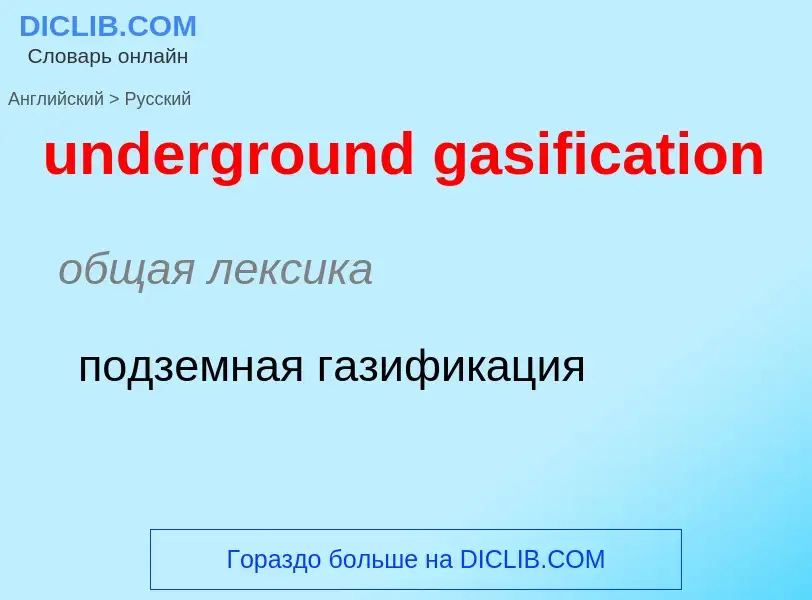Перевод и анализ слов искусственным интеллектом ChatGPT
На этой странице Вы можете получить подробный анализ слова или словосочетания, произведенный с помощью лучшей на сегодняшний день технологии искусственного интеллекта:
- как употребляется слово
- частота употребления
- используется оно чаще в устной или письменной речи
- варианты перевода слова
- примеры употребления (несколько фраз с переводом)
- этимология
underground gasification - перевод на русский
общая лексика
подземная газификация
Википедия
In industrial chemistry, coal gasification is the process of producing syngas—a mixture consisting primarily of carbon monoxide (CO), hydrogen (H2), carbon dioxide (CO2), methane (CH4), and water vapour (H2O)—from coal and water, air and/or oxygen.
Historically, coal was gasified to produce coal gas, also known as "town gas". Coal gas is combustible and was used for heating and municipal lighting, before the advent of large-scale extraction of natural gas from oil wells.
In current practice, large-scale coal gasification installations are primarily for electricity generation (both in conventional thermal power stations and molten carbonate fuel cell power stations), or for production of chemical feedstocks. The hydrogen obtained from coal gasification can be used for various purposes such as making ammonia, powering a hydrogen economy, or upgrading fossil fuels.
Alternatively, coal-derived syngas can be converted into transportation fuels such as gasoline and diesel through additional treatment, or into methanol which itself can be used as transportation fuel or fuel additive, or which can be converted into gasoline.
Natural gas from coal gasification can be cooled until it liquifies for use as a fuel in the transport sector.



![''[[East Village Other]]'' (April 16 – May 1, 1967) ''[[East Village Other]]'' (April 16 – May 1, 1967)](https://commons.wikimedia.org/wiki/Special:FilePath/EVOv2n1.jpg?width=200)
![''Fatigue Press'' was created by GIs at the [[Fort Hood]] U.S. Army base in Texas. ''Fatigue Press'' was created by GIs at the [[Fort Hood]] U.S. Army base in Texas.](https://commons.wikimedia.org/wiki/Special:FilePath/Fatigue Press Cover May1970.jpg?width=200)

![German-occupied Belgium]] during [[World War I]] German-occupied Belgium]] during [[World War I]]](https://commons.wikimedia.org/wiki/Special:FilePath/La Libre Belgique June 1915.jpg?width=200)
![Space City!]]'', April 1, 1971. Art by [[Bill Narum]]. Space City!]]'', April 1, 1971. Art by [[Bill Narum]].](https://commons.wikimedia.org/wiki/Special:FilePath/Narum SC lbj cover.jpg?width=200)
